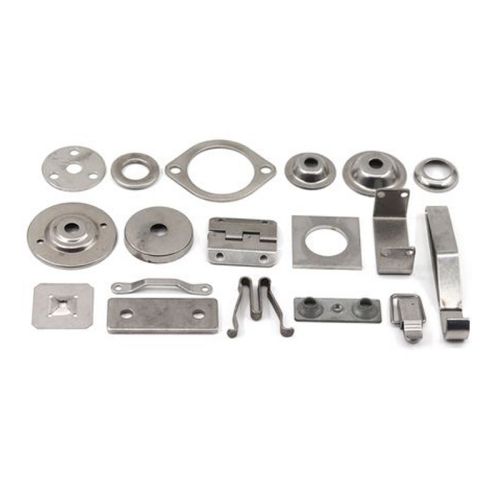Sheet metal stamping and sheet metal fabrication are both processes used in the manufacturing of parts and components from sheet metal. While they share some similarities, there are distinct differences between the two processes. Here's a comparison:
Sheet Metal Stamping:
1. Process: Sheet metal stamping involves the use of a stamping press and specialized tooling to deform and shape sheet metal into the desired form. The sheet metal is subjected to high forces, typically using a punch and die, to create the desired shape, including bending, stretching, and forming operations.
2. Precision and Tolerances: Stamping allows for high precision and tight tolerances, ensuring consistent replication of part geometry across large production volumes.
3. Complexity: Stamping can handle complex shapes and forms, including intricate details, embossing, and multiple forming operations.
4. Speed: Stamping is a high-speed process suitable for high-volume production, making it efficient for large-scale manufacturing.
5. Material Usage: Stamping optimizes material utilization by cutting the desired shape from larger sheets, minimizing waste.
6. Automation: Stamping can be easily integrated into automated production lines, enhancing productivity and reducing manual labor requirements.
Sheet Metal Fabrication:
1. Process: Sheet metal fabrication involves various processes, such as cutting, bending, welding, and assembling, to create a finished product from sheet metal. These processes may be performed sequentially or simultaneously.
2. Versatility: Fabrication allows for versatile manipulation of sheet metal to create parts with different shapes, sizes, and configurations.
3. Customization: Fabrication offers a high degree of customization, allowing for unique designs and specific customer requirements.
4. Manual Operations: Fabrication often involves manual operations, such as cutting with shears or bending with press brakes, which can make it more suitable for smaller production volumes or one-off projects.
5. Flexibility: Fabrication can work with various thicknesses of sheet metal and accommodate different materials and finishes.
6. Finishing and Assembly: Fabrication may involve additional processes such as surface finishing (e.g., painting, powder coating) and assembly of multiple fabricated components.

In summary, sheet metal stamping is focused on shaping and forming sheet metal using specialized stamping presses and tooling, while sheet metal fabrication encompasses a broader range of processes for cutting, bending, welding, and assembling sheet metal to create the final product. Each process has its advantages and is chosen based on factors such as part complexity, production volume, precision requirements, customization needs, and available equipment.

